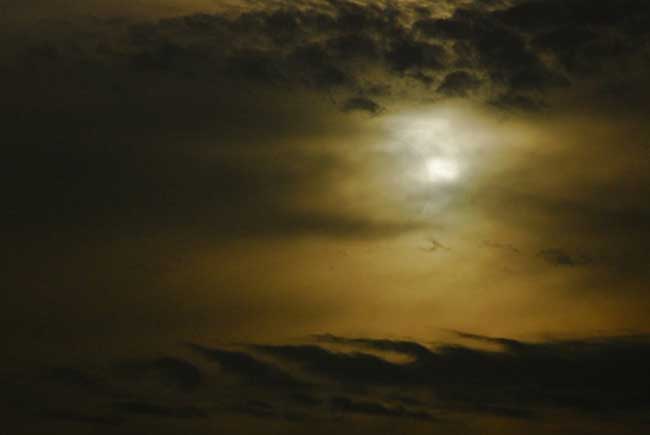Total Solar Eclipse Awes Skywatchers

A total eclipse of the sun wowed millions of skywatchers across India and China Wednesday.
"Eclipse in Yichang exceeded expectations," wrote SETI astronomer Seth Shostak on Twitter. "Locals agog, as was I."
Solar eclipses occur when the moon gets directly between Earth and the sun, casting a shadow on a narrow swath of our planet. Day turns briefly to night.
"The temperature dropped from 96.6 F to 88.5F at totality," said Donald Gardner on Spaceweather.com. Gardner watched the event from Huangshan. "The roosters were crowing and the streetlights came on!"
The path of the eclipse began in India and crossed through Nepal, Bangladesh, Bhutan, Myanmar (Burma) and China. After leaving mainland Asia, the shadow crossed Japan's Ryukyu Islands and curved southeast through the Pacific Ocean.
It was the longest total solar eclipse of the 21st century, and will not be surpassed in duration until June 13, 2132. Totality -- the phase of darkness when the sun is completely covered by the moon -- lasted for up to 6 minutes and 39 seconds.
"On a remote Japanese island, bewildered cattle went to their feeding troughs thinking night had fallen," according to the Associated Press. "And in India, a woman was crushed as thousands of viewers crowded the banks of the Ganges for a glimpse."
Breaking space news, the latest updates on rocket launches, skywatching events and more!
Spaceweather.com has a gallery of eclipse photos.

Space.com is the premier source of space exploration, innovation and astronomy news, chronicling (and celebrating) humanity's ongoing expansion across the final frontier. Originally founded in 1999, Space.com is, and always has been, the passion of writers and editors who are space fans and also trained journalists. Our current news team consists of Editor-in-Chief Tariq Malik; Editor Hanneke Weitering, Senior Space Writer Mike Wall; Senior Writer Meghan Bartels; Senior Writer Chelsea Gohd, Senior Writer Tereza Pultarova and Staff Writer Alexander Cox, focusing on e-commerce. Senior Producer Steve Spaleta oversees our space videos, with Diana Whitcroft as our Social Media Editor.
